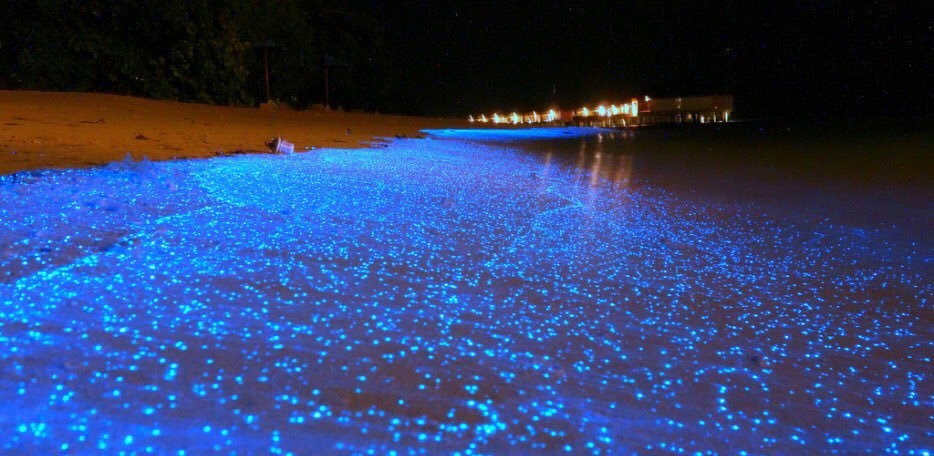In Puerto Rico, locals often refer fondly to Vieques as “La Isla Nena” or “the little girl island,” and travelers routinely fall under the sway of this Caribbean destination just eight miles from the mainland. Yes, the turquoise water and alabaster beaches on Vieques are gorgeous, but the one bucket list-worthy attraction is unquestionably Mosquito Bay on the south coast, home to an amazing light show put on by its trillions of tiny denizens.
After time spent on the mainland, Vieques feels more desolate, with beautiful wild horses ambling along gently sloping crescent beaches. Particularly on the southern, Caribbean coast, the water is gin-clear, so by all means snorkel at Sun Bay and get out on the water in a sea kayak, armed with plenty of sunscreen. But by the time late afternoon rolls around, poise yourself to spend the evening hours under a (preferably) moonless sky out on what many marine biologists consider the world’s most active bioluminescent bay.
What is the bioluminescence of Mosquito Bay?

The reason is simple: Mosquito Bay is by far the brightest in terms of sheer wattage, due to several features. For one, the bay enjoys a narrow, protected outlet to the Caribbean, which allows the microscopic dinoflagellates–technically, pyrodiniums, or whirling fire–that produce the glow to flourish in such tranquil environs that they grow more abundantly here than in any other bio-bay on the planet. When agitated, these tiny organisms (an estimated three-quarters of a million per gallon of water) flit away from your boat or kayak, producing the glows and trails of light that are known collectively as bioluminescence, the top source of light in the oceans.
There are other reasons why Mosquito Bay is so bright. Credit its nutrient-dense mangrove forests and Caribbean climate, as well as the fact that island authorities and the now-ousted U.S. Navy historically preserved the bay and outlawed motorized boats on its waters. That said, be aware that visitors to the bay do in fact disturb the microorganisms, and swimming in the bay–once a mainstay of tours–has been slowly phased out.
Consider your watercraft options
There are two main choices for exploring Mosquito Bay at night: by kayak or by pontoon boat. Be forewarned that you will get wet on a night kayaking tour, and that the experience may not be optimal for younger kids or people with less stamina. If that’s the case, you might opt for a pontoon boat ride; some tours include dinner or cocktails on the beach.
Choosing the right time to explore
And finally, be aware that some boats go out, full moon or not, so investigate the conditions and make a well-informed choice when opting for a tour. If the moon is bright and the sky cloudless, you’ll see virtually no bioluminescence, which can be disappointing, to say the least. But on a dark night with a mojito in hand and your love in tow–well, the glow of that experience could well be priceless.

